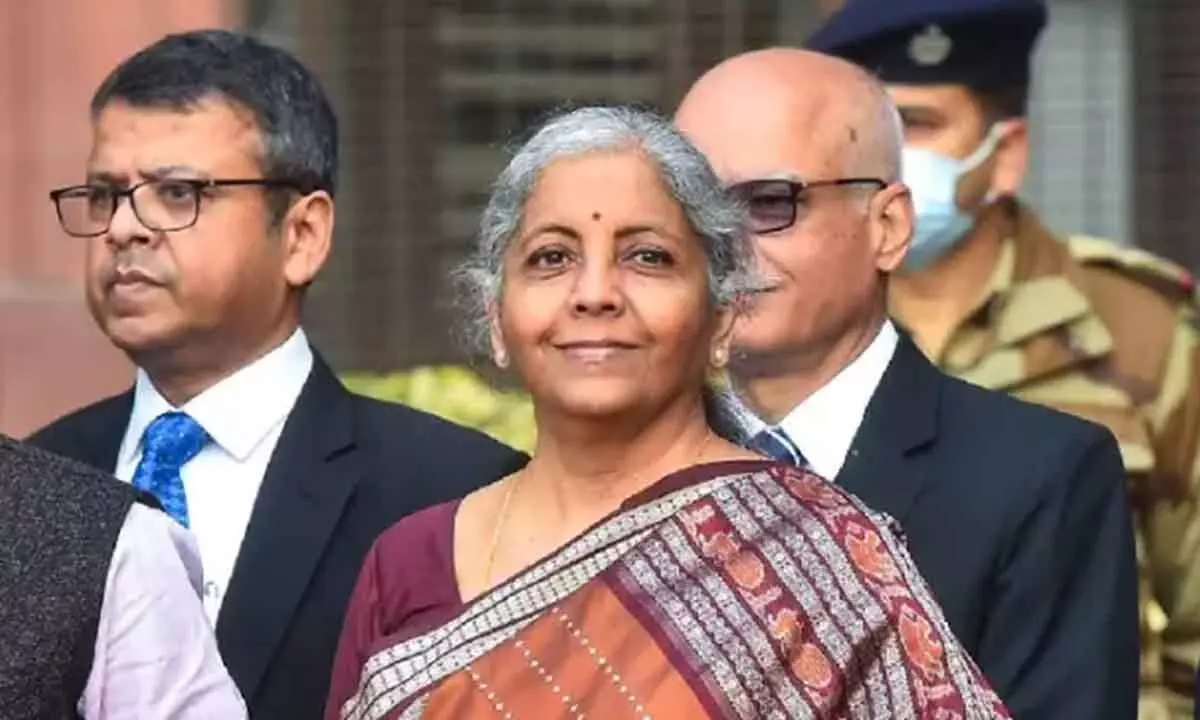Budget Day: Will Modi govt woo voters or prioritize fiscal prudence?
Budget likely to follow Modi govt’s established strategy of fiscal prudence, infra focus, and targeted welfare
image for illustrative purpose

All Eyes on Nirmala
- Election year tradition skips full Budgets, but surprises could still emerge
- BJP’s strength may not necessitate major giveaways
- Govt unlikely to risk long-term finances despite disarray in Opposition
- Meeting deficit target (5.9%) expected due to tax buoyancy
New Delhi: The Interim Budget that Finance Minister Nirmala Sitharaman will present today is expected to stay the course that the Narendra Modi government has followed in the last few years - fiscal prudence, infrastructure building, and targeted welfare measures.
Convention has it that an incumbent government does not present a full Budget in the election year but an Interim Budget or Vote on Account at the joint sitting of both Houses of Parliament. This, however, didn’t stop the government from announcing Pradhan Mantri Kisan Samman Nidhi (PM-Kisan) in the Interim Budget of 2019. Under this programme, the then Finance Minister Piyush Goyal said, vulnerable landholding farmer families with cultivable land up to 2 hectares would be provided direct income support at the rate of Rs 6,000 per year.
He also hiked the standard deduction for salaried persons raised from Rs 40,000 to Rs 50,000.
Given the strength of the Bharatiya Janata Party and PM Modi’s popularity, and the disarray in the Opposition, the government doesn’t seem very desperate to announce anything populist, but then the ruling dispensation is also known for leaving no stone unturned. It may come up with something that it feels would make it electorally more attractive.
However, it seems unlikely that the government would be anything that could hurt public finance in the long or even short run. Fiscal prudence has been one of strengths of the present regime; it would not like to dilute it.
Prudence has, by the way, yielded rich dividends too, as the government is expected to meet the fiscal deficit target of 5.9 per cent (Budget 2023-24), as compared to 6.4 per cent for 2022-23. In the first seven months of 2023-24, the fiscal deficit stood at Rs 8.04 lakh crore, which was 45 per cent of the projected estimate.
The main reason is tax buoyancy, even though there was a major shortfall from disinvestment proceeds. By December 2023, just Rs 10,500 could be realized against the target of Rs 51,000 crore.
The Fifteenth Finance Commission’s proposed fiscal deficit target of 4.5 per cent may look too ambitious, but a strong government, amid fast economic growth and development, can do that. Therefore, it would not be unreasonable to expect Sitharaman setting an ambitious fiscal deficit target.
Since infrastructure building is widely seen as a big achievement of the Modi government, it may like to maintain the momentum.
From an economic liberalizer’s perspective, the objective conditions and the government’s intentions were seldom better. This, however, doesn’t mean that everything is hunky-dory. Manufacturing is still far from the target of being 25 per cent of GDP. The much-touted PLI scheme is yet to yield results, even though Chief Economic Advisor V Anantha Nageswaran says the growth rate would be 7 per cent in the current fiscal ‘closer to 7 per cent’ in 2024-25.
Then there are also the issues of food, fuel, and fertilizer subsidies. All these pros and cons will weigh heavily on Sitharaman’s mind when she presents the Interim Budget today.

